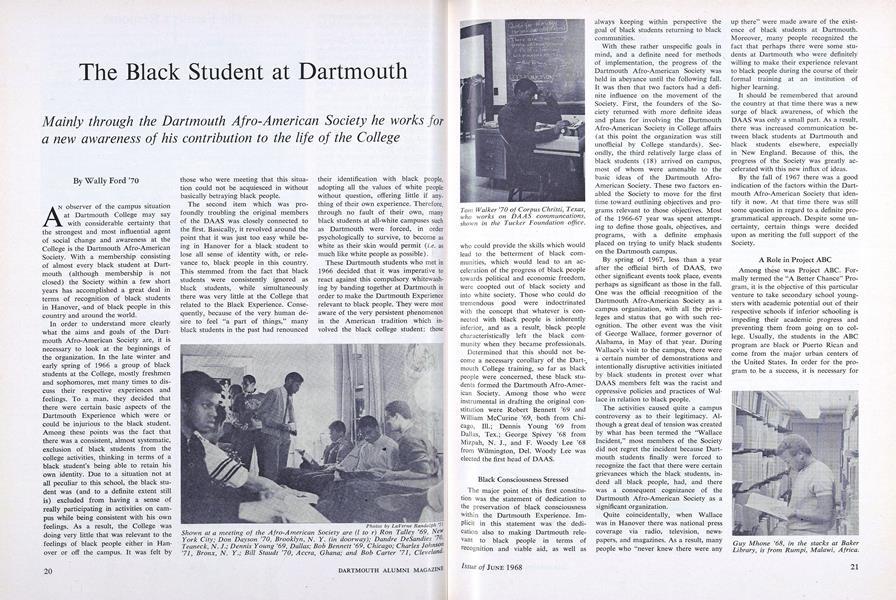Fitting In at Dartmouth
Setting the Scene: The Context of Dartmouth in 1967
In 1967, Dartmouth’s population was majority white males. The class of 1971 had seventeen Black students and only twelve in the class before. Many of the Black students who did attend Dartmouth did not have the means or capacity to visit before their freshman fall. They would arrive in Hanover, New Hampshire, a small rural town, without knowing anyone. Many Black students were the only students who went to Dartmouth from their hometowns. For example, my interviewee, Nels, did not know what Dartmouth was until his high school teacher told him about it: "I had never heard of it. And I had no interest in anyplace in New Hampshire; surely there were no black people in New Hampshire ... finally I applied, just to get [my teacher] off my back" (Shribman 2009, 51).
Tolerated vs. Accepted
Because Black students did not have any connections on campus, many did not feel included or a part of the larger Dartmouth community. For example, Nels noted that while white students were being invited to their professors’ homes and taken out to meals, Nels and his fellow Black counterparts did not receive the same treatment. He felt isolated, alone, and excluded. In addition, he did not feel safe in Greek Life houses, which were also fully white spaces.
“It wasn't like people were being mean, but it's not like they were being inviting either”
- Nelson Armstrong
Nels, like many other Black students, felt as if it was difficult to perform well academically when it seemed like no one was there for him. He did not have much of a community until the Afro-American Society formed in 1969.
The Afro-Am Society was crucial to Black student life on campus. Although the numbers were small, this society gave Black students the necessary space to relax, exhale, and feel comfortable for a moment before stepping back into a campus that did not feel like their own. The Afro-Am was not centered around a physical space, but instead it was more of a gathering of people who could spend time together talking about life on campus, politics, academics, or anything else that was on their minds. The Afro-Am was a safe space that created a tight-knit community of Black students on campus.


